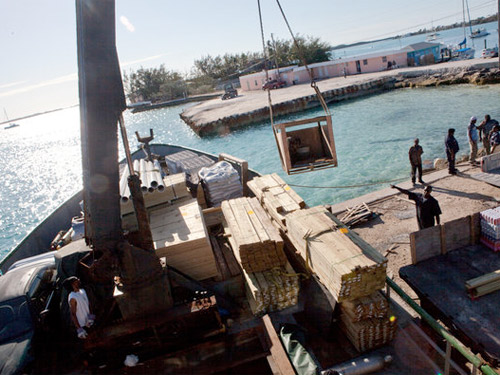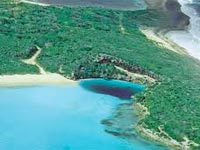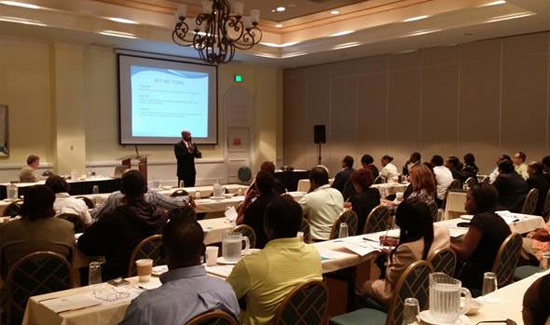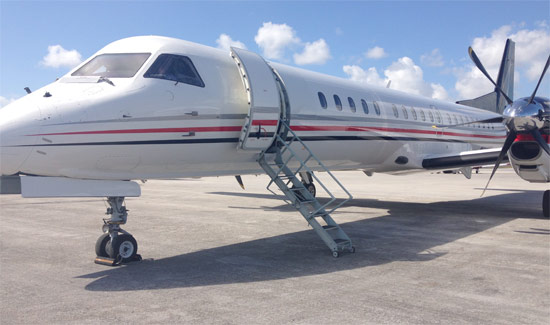
Waves rolled through the night, pitching the ship from side to side. From the bridge deck, the white sand beaches of the Exumas glowed blue-white under the starlight, and the rising moon spread a thin layer of silver over the sea. A few miles north, toward our destination in Nassau, lightning flickered.
I was on a freighter heading through the Bahamas. The sweeping view couldn’t have been more different from the one on deck: shrink-wrapped palettes cradled cinderblocks, baby diapers and bottled water obscured the bow; oiled two-by-eight planks concealed crates of produce, furniture and hardware stowed in the cargo hold. Amidships, a 70-foot crane was lashed to a steel boom crutch. Tucked away in private cabins behind the wheelhouse, two dozen passengers slept soundly.
The ship was one of 15 government-contracted mail boats that deliver provisions, passengers and a few adventurous tourists to the Out Islands, the hundreds of remote islands beyond the tourist and commercial centers of New Providence, Grand Bahama and Paradise Islands. My boat was one of three mail boats that I took on a six-day, 350-mile journey last spring to explore the Bahamas the way Bahamians do. I had vacationed in the islands several times before, usually cooped up in a resort with every amenity a guest could dream up, and I’d long wanted to get beyond the more touristed areas. Mail boats have been the primary means of interisland travel for locals for more than a century and seemed the perfect way to do it. There are no tour guides or lido deck, and the nighttime entertainment consists largely of gazing at a starry sky over the drone of a diesel engine. But for a shockingly cheap ticket (from $45), passengers can get a meal, a bed and one thing that eludes even the most dogged Caribbean traveler: immersion in authentic Bahamian culture.
Like any respectable seafarer, I kept a log. What follows is an account of the journey, which covers towns, bars and beaches largely uncharted by guidebooks.
My room, which was the size of a typical train sleeper compartment, was filled with some of those provisions: screen doors, crates of juice and a half-dozen packages addressed to recipients in Nassau — name and phone number only. There were three other berths in the room, but since the ship wasn’t full I had it to myself.
After leaving my bags, I wandered on deck, where Mr. Brozozog chatted with passengers over the din of the big diesel engines rumbling to life. As the sun set he shared some of his own history, which included growing up on nearby Staniel Cay and the honor of captaining one of the most famous crossings in the Exumas: in 2006 he piloted (by remote control) the Black Pearl while Johnny Depp clung to the wheel during the filming of “Pirates of the Caribbean: At World’s End.”
He also threw in a recommendation, as did several other islanders onboard: go to the hotel at Junkanoo Beach; visit the food shacks on Potter’s Cay in Nassau; avoid Paradise Island at all costs.
Our own meal — served on paper plates — was a Bahamian favorite: barbecued chicken with peas and rice. Afterward, I retired to my cabin for the night, but it soon became clear that, thanks to its location just over the engine room, it would be intolerably hot. At midnight I took the cushion off my bed and dragged it to the upper deck where I was rewarded with a cool breeze and a view of that stunning moonrise and a shooting star falling through the Big Dipper.



